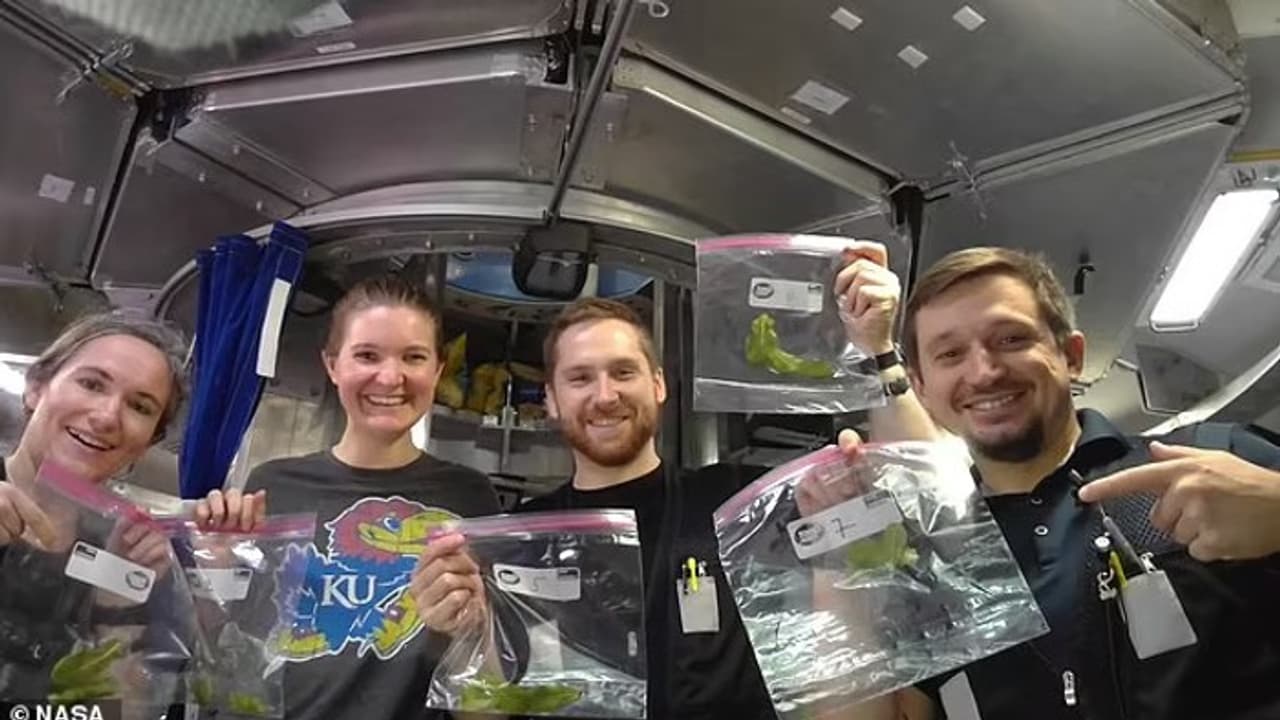In an extraordinary leap toward humanity's eventual journey to Mars, four volunteer scientists have just concluded a 45-day stint in NASA’s most lifelike Mars simulation to date.
In an extraordinary leap toward humanity's eventual journey to Mars, four volunteer scientists have just concluded a 45-day stint in NASA’s most lifelike Mars simulation to date.

The team spent their entire mission locked inside the Human Exploration Research Analog (HERA)—a meticulously designed 650-square-foot habitat located at NASA’s Johnson Space Center in Houston, Texas. On Monday, the crew finally stepped back into "Earth’s atmosphere" as the hatch opened, symbolizing the successful end of their mission.
Throughout their isolation, the crew carried out 18 distinct studies, providing invaluable data to NASA and international space agencies. The insights gained from these trials will help scientists better understand how humans might cope with the extreme isolation, intense workloads, and unique challenges posed by deep-space missions, NASA officials confirmed.
With the 2030s rapidly approaching, NASA's ambition to put humans on Mars is on the horizon. Simulations like HERA are pivotal in understanding how astronauts will endure the most distant human space expedition ever attempted.
The four-member crew—comprising Erin Anderson, Sergii Iakymov, Sarah Elizabeth McCandless, and Brandon Kent—marked the third group to enter HERA’s simulated Martian environment. However, this mission stood out from the rest, as it delved deeper into recreating the intricate details of what daily life and work on Mars might actually look like.
Over the course of a month and a half, the crew embarked on a wide range of tasks, from harvesting crops from a hydroponic garden to raising shrimp. Their mission also involved launching a small satellite, taking a virtual 'stroll' across the Mars landscape, and piloting drones over simulated Martian terrain.
“These activities are designed to immerse the crew in the task-focused mindset of astronauts,” NASA stated, underscoring the authenticity of the experience.
The realism didn’t stop there. NASA even factored in the notorious communication delays that future astronauts on Mars will face. Due to the vast distance between Earth and the Red Planet, messages could take up to 20 minutes to reach their destination. The crew had to adapt to this lag, preparing them for the complexities of real-time communication in space.
Throughout the mission, NASA scientists closely monitored the crew, assessing how their daily routines, isolation, and confined living space influenced their behavior and performance. When they weren’t engaged in scientific tasks, the crew found solace in simple pastimes—reading books, playing cards, building Lego structures, and enjoying music.
As the mission concluded and the crew stepped out into the light of day, Brandon Kent ceremoniously addressed the NASA team, stating, “Following our safe passage to Mars, and our safe return to Earth, as the crew of Campaign 7, Mission 3, we hereby officially transfer this exploration vessel to the flight analogs operations team. We hope this vessel continues to serve as a safe home for future HERA crews.”
In addition to HERA, NASA operates another, larger simulation habitat known as the Crew Health and Performance Exploration Analog (CHAPEA). This expansive 1,700-square-foot facility can host volunteers for up to a full year, with the first crew having completed their mission just this past July.
For those intrigued by the idea of experiencing life on the Red Planet—even within the confines of a simulation—NASA is currently seeking non-smoking volunteers aged 30 to 55 for the next HERA mission. If you think you have what it takes to endure weeks of isolation in a Mars simulation, now might be your chance.
